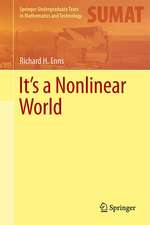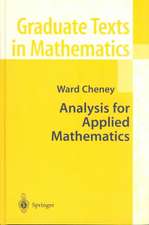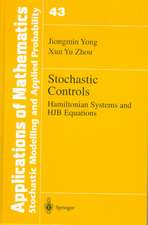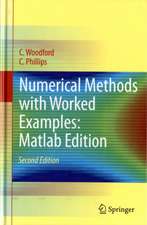Architecture and Mathematics from Antiquity to the Future: Volume II: The 1500s to the Future
Editat de Kim Williams, Michael J. Ostwalden Limba Engleză Hardback – 11 mar 2015
Volume II covers architecture from the Late Renaissance era, through Baroque, Ottoman, Enlightenment, Modern and contemporary styles and approaches. Key figures covered in this volume include Palladio, Michelangelo, Borromini, Sinan, Wren, Wright, Le Corbusier, Breuer, Niemeyer and Kahn. Mathematical themes which are considered include linear algebra, tiling and fractals and the geographic span of the volume’s content includes works in the United States of America and Australia, in addition to those in Europe and Asia.
| Toate formatele și edițiile | Preț | Express |
|---|---|---|
| Hardback (2) | 1019.62 lei 6-8 săpt. | |
| Springer International Publishing – 11 mar 2015 | 1019.62 lei 6-8 săpt. | |
| Springer International Publishing – 19 feb 2015 | 1021.69 lei 6-8 săpt. |
Preț: 1019.62 lei
Preț vechi: 1243.44 lei
-18% Nou
Puncte Express: 1529
Preț estimativ în valută:
195.11€ • 205.17$ • 161.21£
195.11€ • 205.17$ • 161.21£
Carte tipărită la comandă
Livrare economică 17 aprilie-01 mai
Preluare comenzi: 021 569.72.76
Specificații
ISBN-13: 9783319001425
ISBN-10: 3319001426
Pagini: 700
Ilustrații: XIX, 690 p. 365 illus., 79 illus. in color.
Dimensiuni: 155 x 235 x 32 mm
Greutate: 1.17 kg
Ediția:2015
Editura: Springer International Publishing
Colecția Birkhäuser
Locul publicării:Cham, Switzerland
ISBN-10: 3319001426
Pagini: 700
Ilustrații: XIX, 690 p. 365 illus., 79 illus. in color.
Dimensiuni: 155 x 235 x 32 mm
Greutate: 1.17 kg
Ediția:2015
Editura: Springer International Publishing
Colecția Birkhäuser
Locul publicării:Cham, Switzerland
Public țintă
ResearchCuprins
Part VII: Theories of Representation.- Part VIII: From 1600 AD to 1900 AD.- Part IX: 1900–2000.- Part X: Contemporary Approaches to Design and Analysis.- Part XI: Theories and Applications of Computer Sciences.- Index.- Acknowledgements.
Recenzii
“It presents several alternative historical and theoretical contexts of the relationship between architecture and mathematics which has been pushed to the foreground during the past decades with the increasing use of computer-aided design in their profession … . Historians of mathematics, too, will no doubt find useful material here for their research, especially if they are interested in the more practical concerns that have shaped the development of their field … .” (Yelda Nasifoglu, BSHM Bulletin, Vol. 31 (3), October, 2016)
Textul de pe ultima copertă
The aim of this collection of essays is to present a broad portrait of the ways in which two seemingly different disciplines are interconnected. The diversity and varied texture of the essays richly illustrates the affinity between architecture and mathematics. As the almost 100 papers presented in this two-volume publication show, every age and every culture has relied on principles of mathematics incorporated in their works of architecture to imbue their built environment with meaning and order. Included are discussions of geometry, proportional systems, linear algebra, periodic and aperiodic tilings, fractals, perspective, computer science and mechanics. Western architecture of every period is examined: Egyptian, Roman, Medieval, Renaissance, Baroque, Enlightenment, twentieth-century and beyond, as is the architecture of Turkey, China, India, Japan, Australia and Islam. The mathematical nature of the architecture of Leon Battista Alberti, Andrea Palladio and Frank Lloyd Wright is examined, and the philosophical background behind Renaissance architecture is explored. Contributors come from a wide range of disciplines and cultural backgrounds: architects, mathematicians, historians, theoreticians, scientists and educators from the world over. Architecture may be seen and understood in a new light, by professionals as well as non-professionals.
Caracteristici
The most complete anthology addressing a broad panorama of topics regarding relationships between architecture and mathematics Represents the state of the art of multidisciplinary scholarship in architecture and mathematics Sections dealing with specific historical periods are interspersed with sections regarding theory pertinent to those periods Hard-to-find essays collected in a single work Comprehensive introductory essays to both volumes by the editors provide a guide to the discipline
Includes supplementary material: sn.pub/extras
Includes supplementary material: sn.pub/extras















